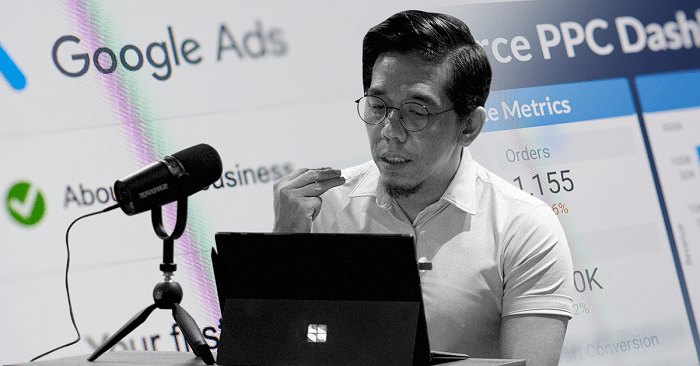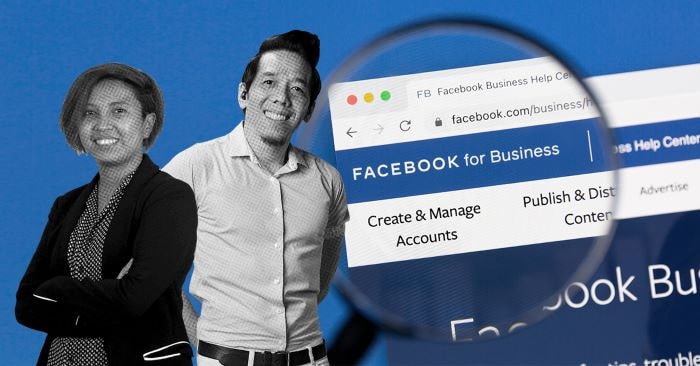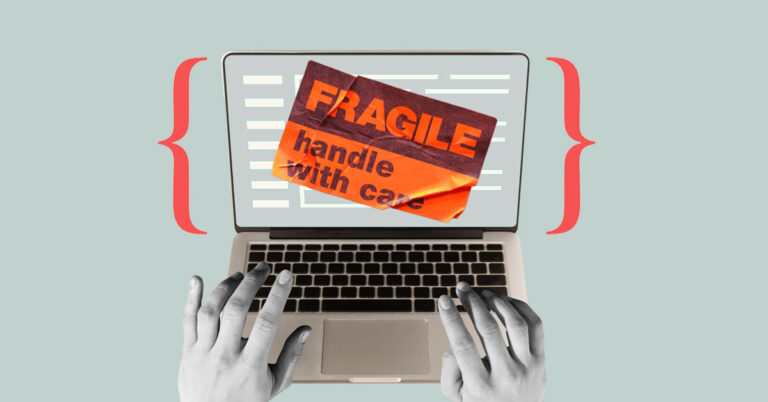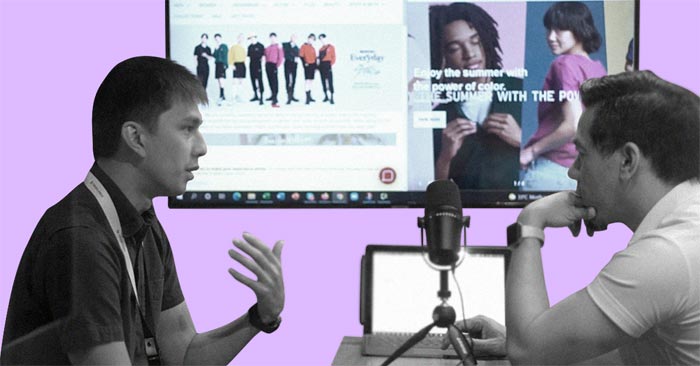Truelogic Episode 14 Recap: Building the Best Google AdWords Campaign for your Brand

Google AdWords is one of the best ways to generate traffic for your business online. With most things being sold and bought through the Internet , COVID-19 accelerated us three years into the future. People purchase stuff on their mobile phones, tablets, and desktops. There’s no product that doesn’t go through online transactions. So the fact that Google generated $210 billion of revenue in 2021 tells us that a lot of businesses worldwide, not just locally, are using the service to advertise their products and their services.
Because for so long as people keep searching, for so long as Google serves a hundred billion searches every month, AdWords and advertising on AdWords is here to stay.
Podcast Transcription
Berns San Juan: Hi guys, and welcome to another edition of the Truelogic DX podcast. Today, we’re going to talk about building the best Google AdWords campaign for your brand or your business. So if you haven’t joined the Google ad bandwagon, yet, I suggest you hop on and enjoy this episode as we talk about some of its benefits for your businesses.
What is Google AdWords?
Have you encountered that pesky product that chases you, regardless of which website you go to, that’s a Google Ad. Have you seen the YouTube videos that interrupt you? Like either at the start, at the end or in the middle of your program, those are managed in AdWords. The banners that appear inside YouTube, those are AdWords. The sponsored searches or the sponsored results that appear at the top of searches. Those are AdWords. So AdWords has a lot of formats.
So when you say an AdWords campaign, it’s not really just a matter of executing a search campaign.
How does Google AdWords work?
There’s one big metric that Google calls undisclosed, but there are a couple of things that you have the ability to measure that indicate whether you’re headed in the right direction or not. Let’s start off with the most important one.
Click-through rate (CTR)
If you create an ad that is relevant to the person that is performing the search, then you should be rewarded with them clicking your ad, which then leads them to your website and your website does the conversion. But the CTR is an important metric to look at and you’re wanting to hit a target of three or better for search and 1% or better for a display. So your click through rate is an influencer of how well your AdWords campaign will perform.
Landing pages
The ads job is to attract the user through a landing page. It is the landing page’s job to convert the user. If you’re going to start a conversation, if they’re going to make a purchase, all of that is influenced by the landing page. Now, the other thing that influences it is the relevance of the keywords in your ad and in your landing page, or I call this fulfilling the promise. How well does your landing page fulfill the promise you made on your ad? Whether it’s your banner or whether it’s a search ad? How well does the landing page fulfill the promise you made on your ad. That’s keyword relevance.
Ad relevance
Are you dropping them in the landing page that matches the intent of the search? I think for example, if somebody was looking for locations or where to eat, or if your landing page satisfied that purpose, then your brand performs really well.
The historical performance of your ad also does well. This is why I always encourage brands to have their own MCC ID. You know, don’t let agencies own your MCC ID. You ought to own it yourself.
Quality Score
AdWords will summarize for you in one score, it’s called your quality score. When you review your AdWords campaign, make sure that you go to columns, and then you’d turn on the quality score column, a score of seven or better is terrific. A score of seven or worse is poor. So try to stay at seven or better. If there is any single number that indicates whether you are succeeding or failing, it’s the quality score.
Advantages of using AdWords in your digital marketing strategy
Speed
As an SEO, like my profession as an SEO, one of the things that drives me crazy about SEO is the fact that it’s momentum driven. It’s momentum driven will always set your expectations to three to six months. Google has to scan your content. Remember your content, weigh your content versus everybody else’s content, which is essentially what ranking is. But that’s not true for AdWords. It’s not momentum driven. You set up your ads today. You’re live later in the day at the worst case, tomorrow. So speed is an advantage.
Flexibility
Another advantage. You can spend as much as $50 a month, or you can buy AdWords like Elon Musk buys his Twitter, but the budget is pretty flexible. You can spend as much, or as little as you want on as few or as many channels as you want.
Precision
It pains me to say this, but to what degree that is significantly better than SEO. I’ll give you guys a great example. Let’s say you’re an airline and you’re wondering why you only get five confirmed transactions per 10,000 attempted bookings. AdWords has the ability to recover some of that 10,000 by throwing an ad specifically at the people that began an airline booking and did not follow it through to completion. This is called the cart recovery campaign. SEO has no cart recovery capabilities. The behavior always begins with the user. It’s a highly motivated marketing activity.
Persistence
Unlike SEO, SEO is limited to the SERP, meaning somebody must have performed the search in order for your SEO to create value. For AdWords, experience is not limited to the search engine results pages. It’s persistent. It can follow them around on YouTube. It can follow them around in apps. It can follow them around and in websites that have placeholders for the Google display network.
Multiple Formats
You have the search format, you have the banner format, you have the video format, all of these are different AdWords formats, which is not, or actually it’s a limitation on SEO where you’re sort of tied to the meta title and the meta-description.
So there are a lot of advantages to working with Adwords and consider those as some of the things or as some of the potential reasons why it might be for you. Now, when you’re going to use Google AdWords to improve your sales, to improve the amount of inquiries, I think you got to know what it is you’re spending for, right?
Using Google AdWords to enhance your business
Sign Up
You need to find out what it is that you intend to measure ROI against. Now, when you’re using Google AdWords, of course, you’ve got to sign up for AdWords. You will need a Gmail account.
Identify your target audience
After signing up, one of the most important things that a marketer will do is to identify the target audience.If you have not identified who your target audience is, stop. Don’t run your AdWords campaign until you know who you’re talking to. Marketing is not generic. If you talk to everybody as if they were a monolith, you’re going to wind up talking to nobody. If you make your product, your service or your commodity sound like it’s the fountain of youth, nobody is going to buy.
So know who you’re talking to. In Truelogic’s case, we’re only talking about the two types of avatars or two types of customers. Once you’ve figured out who you’re talking to, figure out where these people are. Like, okay, so you’re talking to these kinds of people, but where are these people? And then decide.
Establish a budget
How much money are you willing to hedge on this map? What kind of budget are you throwing at it on a monthly basis? You will eventually have to break down your monthly budget into a daily budget, but establish the budget that you’re going to use on your AdWords campaign.
Do some research
Remember you’re not doing research once when you’re doing AdWords. You’re always reiterating, sometimes on a weekly basis. You’re always turning off ad groups that don’t perform. And you’re always doubling down on the ones that do.
Come up with relevant keywords
Pick your first set of keywords, the ones that you think your users are actually performing searches against and pick those. If in a matter of a few days, you are seeing results on some keywords, but no results on others. Turn off the ad groups that are not performing, and double-down on the ones that do.
Now, keywords don’t apply to everything. Like for your ad banners, they’re not keyword driven, they’re audience driven. Keywords do appear in the text that you put on your banner, because remember it doesn’t matter whether you’re doing a video ad, a banner or a text ad. Like a search and network ad. In any of those formats, you’re making a promise.
And so picking up the keywords and then landing users onto the page where you fulfill that promise matters.
Choose a network
Choose your poison. You can be on YouTube. You can be on the Google app network. You can be on the Google display network and you can be on the Google search network. But utilize the network based on what marketing target you have.
If you’re targeting the top funnel, use the display network and YouTube. If you’re mid funnel, use the search network. If you’re bottom funnel, use the display networks for marketing features or use aggressive ads in the search network. Pick the network that you’re using and use the network that aligns well with what your marketing goals are.
Best Practices for your Google AdWords Campaign
Be selective in choosing keywords
Now some of the best practices that can be done on AdWords, be mindful of your keywords. There are tools out there that you can use if you want to find out what keywords your competitors are trying to be relevant for. You can use third party tools to find out what those are like on Similar Web. Another one is SEMrush. And if you don’t know where to start, begin with your competitor’s keywords, and this is where a similar web in SEMrush comes in, right? That’s how you make your keyword research fast and easy.
Review the quality score
Pro-tip: you’re not going to see the quality score until an ad gets a click through. So for so long, even if an ad is getting impressions, but no clicks, a quality score will not appear. The first few click throughs must happen in order for the quality score to get computed, but understand your quality score. And do your best to get it to 7, 8, 9. The better your quality score, the less you have to pay for your ads.
Relevant landing page
First of all, your ability to craft a user’s experience is significantly better on a dedicated page than they are on your organic pages. The other reason to create a landing page and not use your organic pages is so that your SEO and your SEM are never in conflict.
So whenever possible, unless it’s a top funnel campaign, why spend the investment and the money in terms of developing a specific landing page for it? When conversion is not really the objective of the top funnel, unless it’s a top funnel campaign, dedicate a landing page to your SEM campaign.
Keep it short and simple
You make a specific promise in the ad. And so you have to fulfill it as in a specific way inside your landing page. So make sure that your landing page fulfills the promises of your ad, and on your landing pages, keep it short. Keep it concise. One of the things that I always advocate for is to eradicate your menu. You paid for that user to be there. You don’t want to give them 40 exits from that page.
Tips for running Google Ad Campaigns
Mind your spending
If you’re spending, if you’re planning to spend, let’s say 20,000 pesos or that’s about 400 US dollars, break that down to per week, break that down to per day. Monitor your ad spend, monitor your utilization and remember that if your ads are over-performing, Google will not necessarily respect your daily ad spend limit.
It will never overspend more than what you pretty pay into it, but monitor your utilization because if your ads over-performed, Google charges you less, but it shows your ads more frequently. Eliminate the ads that are not performing, double down on the ones that are right. So manage your phasing.
Manage the quality of your ads
For enough ad groups that are not performing, double down on AdWords that are expanding the match types. So when I say match types, these are exact phrases and broad matches and explaining what those are is that is an entirely different episode, but monitor your match type. Look at your ad quality more important than that, have your friend read your ad copy. The worst judge of marketing collateral is a marketer.
So if you created the ad copy, you know, don’t let your boss read it. Have a friend read it. Have somebody from another department read it, but be open to criticism. Your ad copies matter a lot. Be mindful of your ad banners and know that Google is very sensitive to skin tones. Whenever you create any type of ad collateral. And then don’t just throw content out there, randomly. Make sure that it’s aimed towards the right target audience. Remember you’re paying for this exercise, so make sure that there is always a specific audience you’re going after when you’re running an AdWords campaign.
Don’t be wasteful
The world is not your oyster, at least not in AdWords. If you treat the world like your oyster, you are gonna need a lot of pearls cause, limited to the geotarget that is most relevant to you, one of the pieces of advice I always like to give people is that only 20% of your geotargets will yield 80% of your relevant metrics.
So start with the top 20% of locations or geolocations that are relevant to your target audience. Pay attention to your quality score weekly. If you have to take an AB test, if you have to dedicate a landing page, if you have to, in fact, one of the most compelling reasons to create a dedicated landing page for your ad campaign is because the landing page is a huge influencer of your quality score.
These are some of the best pieces of advice I can give you when it comes to managing AdWords, without turning this into a two-hour conversation. With that, I’ll wrap up this episode of Truelogic DX.
Thank you again for listening to me today. And if you have any questions, as always, drop your questions, comments, or suggestions by sending us a message on Facebook, we’re on LinkedIn and on YouTube, or check out our website for more resources on digital marketing. Don’t forget to tune in and subscribe to our Spotify, Google, and Apple.










